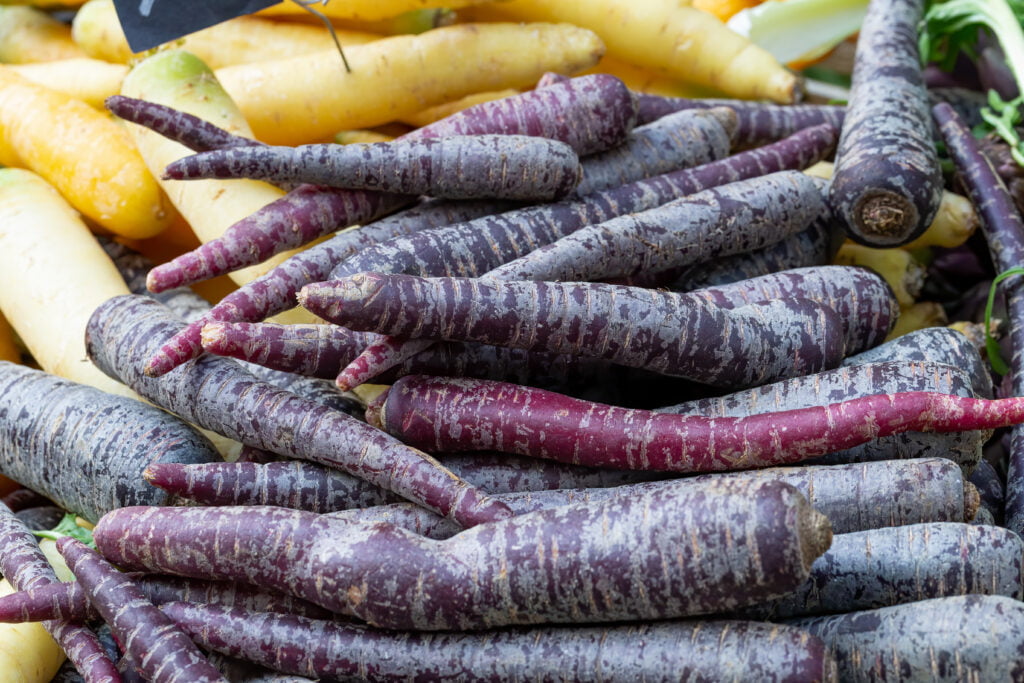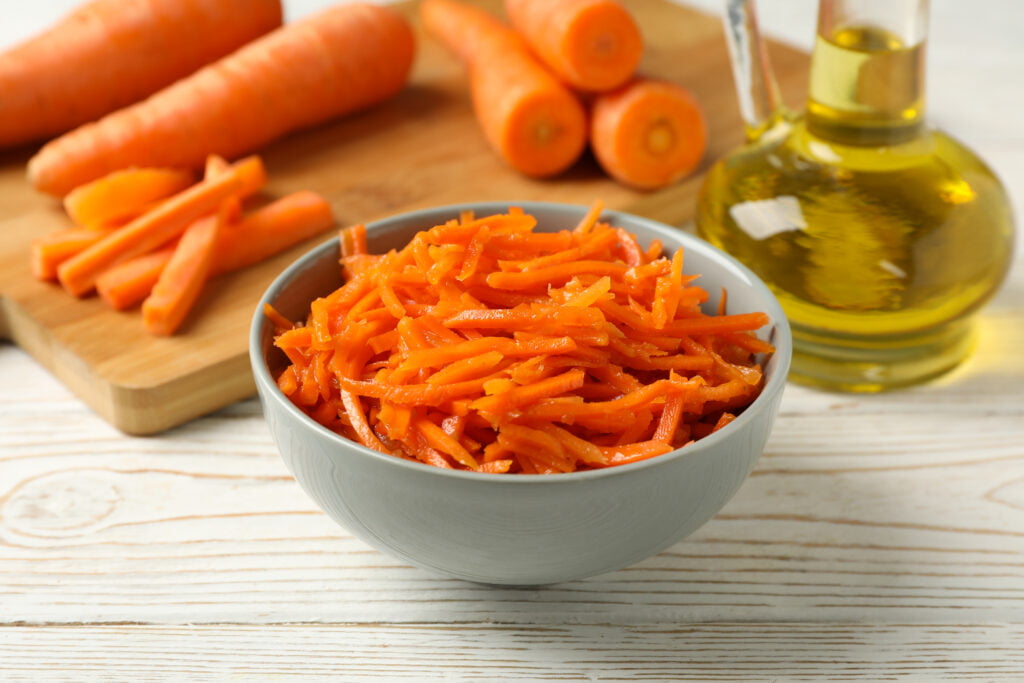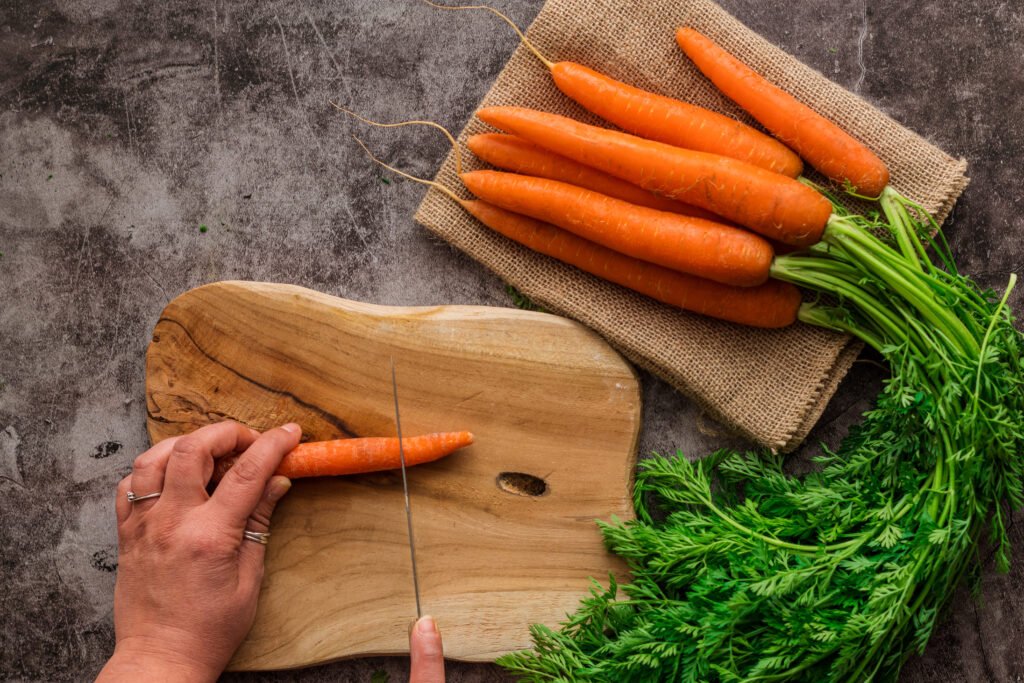17 Fascinating Facts About Carrots

Introduction
From their colorful history to their incredible health benefits, carrots are one of the most popular and nourishing veggies around. Yet there’s far more to this tasty orange root than meets the eye.
Carrots have a fascinating backstory as one of the first cultivated vegetables used primarily for medicine. Their nutrient density and portability led to innovations like canning that shaped the modern vegetable industry. And they continue to be a versatile, healthy addition to diets today.
To uncover the intriguing secrets of carrots, keep reading for 17 fascinating facts about this nutritional powerhouse veggie. You’ll discover interesting tidbits about their origins, growing habits, health perks, and more. Let’s peel back the layers on one of the world’s favorite root vegetables!

1. Carrots Are Not Vegetables
Botanically speaking, carrots are not vegetables at all. Vegetables are defined as the edible parts of plants such as leaves, stems, roots, tubers, flowers, and bulbs.
Carrots are technically the taproot portion of the Daucus carota plant. So while we treat them as a vegetable in the kitchen, carrots are just the underground root portion of the carrot plant.
2. You Can Eat the Whole Carrot Plant
The taproot is the most commonly eaten portion, but other parts of the carrot plant are edible too.
So while we’re used to just eating the roots, remember that the entire Daucus carota plant is edible and nutritious.
3. Carrots Can Reproduce from Themselves
If you save some carrots from your harvest and leave them in the ground over winter, they will re-sprout in spring and grow flowers, producing seeds.
So you can grow new carrots from an existing carrot plant, with no seeds required. Just leave some rooted carrots in the ground once temperatures drop below 45°F. In spring, they will send up tall flowering stems that will develop seed heads.
4. They’re Great for Pollinators

As a member of the Apiaceae family which includes dill, cilantro, parsley, and fennel, the nectar and pollen from carrot flowers attract tons of beneficial pollinators.
Tiny braconid wasps, tachinid flies, hoverflies, predatory wasps, lacewings, ladybugs, parasitic wasps, and even bees all flock to the flat-topped white umbels of carrot flowers.
So if you want to support pollinator populations in your garden, be sure to let some carrot plants flower and set seed each year.
5. Wild Carrots Were White or Purple

The familiar bright orange carrot we buy today originated from wild carrot plants that had white, yellow, or purple roots.
The modern, orange carrot was developed by Dutch growers in the 16th and 17th centuries, who bred the plants for a higher beta-carotene content, which gives them the orange pigment.
So orange carrots are a relatively recent human innovation. The original wild Queen Anne’s Lace carrots were more diverse in color.
6. They’re the Richest Source of Beta-Carotene
Orange carrots get their vivid color mainly from beta-carotene, which gives them the highest beta-carotene content of any vegetable.
Beta-carotene is an antioxidant that converts to vitamin A in the body. Just one medium 7.5-inch carrot provides over 400% of your recommended daily vitamin A.
Carrots are such a rich source of beta-carotene and vitamin A that they were first used in medicine as treatments for a range of ailments.
7. Carrots Were First Grown for Medicine, Not Food
The first cultivated carrots appeared in the Iranian Plateau and Asia Minor region over 1000 years ago. But they weren’t grown for eating.
Instead, carrots were valued for their medicinal properties, being used as treatments for conditions like indigestion, worms, tumors, kidney stones, menstrual pain, and more.
The nutrients in carrots were so beneficial that carrots made their way along the Silk Road trade routes to Western Asia and Europe for their medicinal applications.
8. They Can Stay in the Ground All Winter
Carrots are biennial vegetables, meaning the plant needs two growing seasons to complete its lifecycle.
During the first season, the edible root forms and stores energy. Then in its second season, the carrot plants flowers, sets seeds, and dies back.
This means you can harvest carrots in the fall or early winter, but leave some in the ground over the cooler months. The roots will hold fine, ready to be dug up as needed or to flower in spring.
9. They’re Mostly Water
A carrot is around 88% water, which is what gives it that signature crunchy-juicy texture.
Carrots have such a high water composition that a 1-cup serving provides almost a quarter cup of your daily fluid intake.
Eating carrots can therefore help with overall hydration and water balance in your body. Their moisture content also makes them lower in carbohydrates and calories.
10. Cooking Unlocks More Nutrition

While carrots are certainly healthy to eat raw, cooking them can provide more health benefits.
When heated, carrots release more beta-carotene from within the plant cells, along with other antioxidants like lutein, lycopene, and alpha-carotene.
One study found that cooking carrots increased their antioxidant levels by over 30% compared to raw. So enjoy carrots cooked or raw for the biggest nutritional impact.
11. The Seeds Are Also Useful
Once the carrot plant flowers in its second year, it will develop numerous seed heads from the flat flower umbels.
The seeds inside are small and a bit tricky to harvest but can be eaten or used to grow new carrot plants. Each umbel can contain up to 1000 seeds.
The seeds have an earthy, nutty flavor. They can be dry roasted and added to bread, muffins, or cake batters. Carrot seed oil can also be extracted and used for cooking.
12. They’re the Second Most Popular Vegetable Crop
Carrots now rank as the second most commonly grown vegetable crop in the world, after potatoes.
China produces the most carrots by far, accounting for about 45% of total production. The US comes in second, producing around 1.2 million tons per year.
On average, every person on earth eats around 3 kilograms of carrots per year. Their popularity comes from their versatility, nutrition, and long storage potential.
13. Their Seeds Are Tiny
Given their small size and delicacy, carrot seeds can be tricky to handle. Each umbel contains up to 1000 seeds, and some estimates say over 2000 seeds can fit in just one teaspoon.
The seeds need light to germinate properly, so proper seeding and spacing is important. The seeds also only remain viable for 1-3 years, so fresh seeds should be sown each season.
Their tiny size makes them perfect for containers and urban gardens short on space. Just sprinkle the seed thinly across the soil.
14. We Eat Over 10,000 in a Lifetime
Given their popularity around the world, the average person consumes a lot of carrots over a lifetime.
It’s estimated that the average person will eat at least 10,866 carrots over their lifespan. That’s about 1 medium carrot per week, though consumption varies widely by region.
Carrots are easy to eat often. They make nutritious snacks, side dishes, soups, juices, smoothies, and more. Their versatility helps explain why so many carrots go into our bodies over a lifetime.
15. Carrots the First Canned Vegetable

Carrots have a long shelf life compared to many other vegetables. Their high water content and firm cell walls allow them to keep longer in storage.
This trait allowed carrots to become the first commercially canned vegetable in the early 1900s. Canning made it economical to preserve carrots at peak ripeness and distribute them widely.
Today, you might take canned carrots for granted as a pantry staple. However, this innovative approach to preserving carrots revolutionized the vegetable industry.
16. They Improve Eyesight
It’s true – eating more carrots can benefit your visual health and reduce the risk of eye problems.
Carrots are rich in beta-carotene, which the body converts to vitamin A. Vitamin A helps protect the surface of the eye and reduces the risk of issues like macular degeneration and night blindness.
Just one medium carrot provides over 400% of your daily vitamin A, making carrots one of the best foods for healthy eyesight.
17. They Originated Over 5,000 Years Ago
Wild carrots, also called Queen Anne’s Lace, originated in Persia over 5,000 years ago. They were brought West along trade routes as exotic medicines.
The first cultivated carrots appeared around the 10th century in Turkey and Iran. By the 13th century, they reached Western Europe, China, and Japan.
Orange carrots were developed by Dutch growers in the 16th century. Plant breeding since then has continued improving the sweetness, tenderness, and nutrients in our modern orange carrots.

Conclusion
Carrots have come a long way from their origins as a wild medicinal plant. Through innovations in breeding and preservation, they are now one of the most widely enjoyed vegetables globally.
Beyond being crunchy and tasty, carrots also deliver significant health benefits. Their beta-carotene, vitamin A, and antioxidant content support vision, immunity, and more.
Yet as common as they are today, carrots still have intriguing secrets in their long history and growing habits. So next time you enjoy a carrot, take a moment to appreciate this nutritious veggie’s fascinating backstory.
The past, present, and future of carrots are undeniably rich. With this handy guide, you now have 17 insightful facts to help you dig deeper into one of the world’s favorite roots.
Frequently Asked Questions
Why are my carrots tough or woody?
This can happen if the carrots are overgrown. For tender carrots, harvest them when they are 1 to 1.5 inches wide at the top. Overgrown carrots tend to get fibrous as they expand.
Can you eat carrot tops?
Yes! The green tops are edible. They have a flavor similar to parsley and can be used in place of herbs in many recipes. Just trim and rinse well before using.
What is the healthiest way to cook carrots?
Roasting, steaming, or boiling carrots are all healthy options. Cooking helps break down carrot cell walls, increasing the bioavailability of beta-carotene and other nutrients. Just don’t overcook them to mush.
Why are my carrots splitting?
Splitting or “forking” happens when carrots experience inconsistent growth. This could be due to compacted soil, drought stress, or abrupt fertilizing. Providing steady water and loosening soil can help prevent splitting.
Can you grow carrots from grocery store carrots?
You can try it, but it may not work. Grocery carrots are often hybrid varieties bred for uniform shape. The seeds are less viable and may produce misshapen roots. For best results, buy heirloom or open-pollinated seeds.
What carotenoids make carrots orange?
Beta-carotene is responsible for most of the carrot’s orange pigment. Carrots also contain alpha and gamma carotenes. These all convert to vitamin A and promote good vision and immunity.
How do you store carrots long-term?
Trim the tops to remove the leaves, then store carrot roots in perforated plastic bags in the coolest part of the fridge. This prevents moisture loss so they stay crisper longer. Carrots can be stored for 3-5 months this way.





